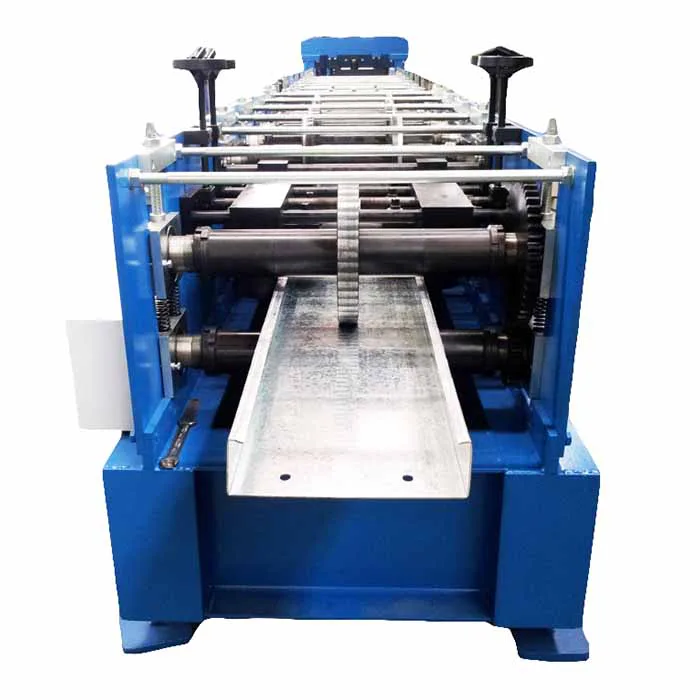
How to Troubleshoot Common Issues with Sheet Metal Rolling Machines
- By:Metmac
- 2024-09-12
- 190
How to Troubleshoot Common Issues with Sheet Metal Rolling Machines: A Comprehensive Guide
Are you losing your sheet metal rolling rolls to the relentless march of metal mayhem? Don’t despair! This guide will arm you with the tools to diagnose and conquer the most prevalent ailments plaguing these mechanical behemoths.
Alignment Gone Awry: A Tale of Skewed Rolls
If your sheet metal is emerging from the rollers with an uneven or wavy surface, alignment issues may be the culprit. Inspect the rolls for any signs of misalignment, such as gaps or overlaps between them. Adjust the roll positions accordingly to restore optimal alignment.
Surface Imperfections: The Scourge of Dents and Scratches
When your rolled sheet metal exhibits dents or scratches, it’s time to scrutinize the rollers. Examine them closely for any imperfections that may be marring the metal’s surface. Resurface or replace the damaged rollers to ensure pristine results.
Torque Trouble: A Power Struggle
If your rolling machine struggles to bite into the sheet metal or produces insufficient force, torque issues may be at fault. Check the torque settings of the motor and adjust them to provide adequate power. Ensure that the belts or chains are properly tensioned to transmit torque efficiently.
Lubrication Breakdown: A Friction-Filled Nightmare
Insufficient lubrication can lead to friction and increased wear on the machine’s components. Lubricate all moving parts regularly, especially the bearings and gears. Choose lubricants that are compatible with the materials used in your machine.
Electrical Anomalies: A Spark of Concern
Electrical problems can range from faulty wiring to blown fuses. Inspect the electrical components for any signs of damage or loose connections. Consult an electrician if necessary to ensure the safety and proper functioning of the machine.
Safety First: Embracing Metalworking Prudence
Always wear appropriate safety gear when operating a sheet metal rolling machine. Clear the work area of obstacles and keep your hands away from the moving parts. Follow all safety protocols to minimize the risk of accidents.
By implementing these troubleshooting tips, you can resurrect your sheet metal rolling machine from the depths of despair and restore it to its former glory. Remember, the key to conquering these issues lies in a combination of vigilance, technical prowess, and an unwavering dedication to precision metalworking.
-
Metal Sheet Forming Machine: The Engine of Modern Fabrication and the METMAC Standard
2025/12/30 -
Laser Cutting Machine for Steel Plate: Precision Redefined for Modern Fabrication
2025/12/30 -
Metal Curving Machine: Shaping Strength with Precision and the Art of METMAC Engineering
2025/12/30 -
Shear Metal Cutting Machine: Precision, Power, and the METMAC Standard
2025/12/30
-
Advanced Sheet Metal Rolling, Laser Cutting, and Folding Machines for Precision Fabrication
2025/10/31 -
High-Performance Sheet Metal Bending and Cutting Machines for Modern Fabrication
2025/10/31 -
High-Quality Sheet Metal Equipment for Sale: Efficient Solutions for Modern Manufacturing
2025/10/31 -
High-Performance Sheet Metal Equipment for Sale: Forming and Shearing Solutions for Modern Fabrication
2025/10/22
-
Improving Accuracy in Metal Fabrication with Laser Metal Shear Machines
2024/05/11 -
Latest Technological Advancements in Rectangular Duct Machines
2024/05/11 -
Integrating Automation with Rectangular Duct Machines for Enhanced Productivity
2024/05/11 -
Metal Shear Machines- Essential Tools for Precision Metal Cutting
2024/05/11
-
A Guide to the Latest Innovations in Sheet Metal Folding Machines
2024/11/29 -
Key Features to Consider When Investing in a Sheet Metal Folding Machine
2024/11/28 -
Enhancing Precision with Advanced Sheet Metal Folding Machines
2024/11/27 -
How to Choose the Right Sheet Metal Folding Machine for Your Workshop
2024/11/26







